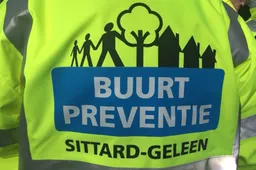RIVM notification on health effects of combined emissions at Chemelot

On April 14, the RIVM (National Institute for Public Health and the Environment) published a notification on emissions of highly concerning substances (ZZS) around Chemelot.
In this notification, the RIVM tested a new scientific method with practical data from the Vouershof measurement point at Chemelot. The new method looks at the sum of the risks of the individual substances to get a risk estimate of the mixture of emissions. When this method is applied at Vouershof, it turns out that past emissions of the mixture have exceeded the risk norm in several years. Chemelot has complied with the applicable legal norms for individual substances in all years.
What was investigated?
The RIVM is researching a new method to better visualise the effects of a combination of multiple harmful substances, the so-called very concerning substances (ZZS). This helps to better consider combined health effects when future permits are to be granted.
For testing this method in practice, a case around the Chemelot site in Geleen was chosen. Chemelot is a leader in measuring industrial emissions, so there are already a lot of data available. These data provided the RIVM with the opportunity to test their theoretical model in a concrete situation.
In the Chemelot case, three substances in the ZZS category were examined: benzene, 1.3-butadiene, and monovinyl chloride (MVC). These substances are already tested individually for compliance with legal norms and have passed these tests. However, if the new cumulative method is applied at Vouershof, it turns out that the emissions of the mixture have exceeded the risk norm during several years.
What does this mean for residents?
The RIVM states that no conclusions about actual health effects can be drawn from the findings in the notification. More research is needed for this.
Legislation already stipulates that companies must minimise the emissions of ZZS as much as possible. This obligation also positively affects the reduction of the sum of the health effects of ZZS. Chemelot, together with the Province of Limburg and the Environmental Service South Limburg (ODZL), is actively working to minimise emissions and is taking measures to do so. It is positive to note that the year 2024 remains below the risk norm and that the ODZL has reason to believe that emissions will continue to decrease in the coming years.
How does our municipality respond?
The municipality of Sittard-Geleen takes these RIVM findings seriously. It is positive that the Ministry, with the help of the RIVM, is taking this step towards better protection of the health of residents. What is stated in the notification about the accumulation of three very concerning substances raises questions and is a reason for continuation of the discussions with all parties involved. The municipality will continue to follow this dossier closely and inform residents as soon as more information is available. The RIVM's conclusion that combined exposure may have an effect on public health deserves to be taken seriously so that this can be prevented in the future. The municipality insists on knowing what these outcomes mean for our residents and demands clarity about the next steps.
If you have questions or concerns about health in relation to Chemelot emissions? Then check the Q&A page of the GGD South Limburg.
Who does what?
The Ministry of Infrastructure and Water Management commissioned this research. The RIVM develops and tests the new measurement method. The Province of Limburg is the competent authority and responsible for permit granting, supervision, and enforcement at Chemelot. The municipality closely follows developments and wants clarity about what this research means for its residents.
Exploratory health research Chemelot
The RIVM is also conducting an exploratory study on the health of residents around Chemelot on behalf of the Ministry of Infrastructure and Water Management and the Province of Limburg. This research is separate from the research into the new cumulative method. The municipality of Sittard-Geleen was informed timely about this research and participates in the guidance group. More information about this research can be found on the RIVM website. During the discussions about the health research, the research into the measurement method had not yet been discussed




